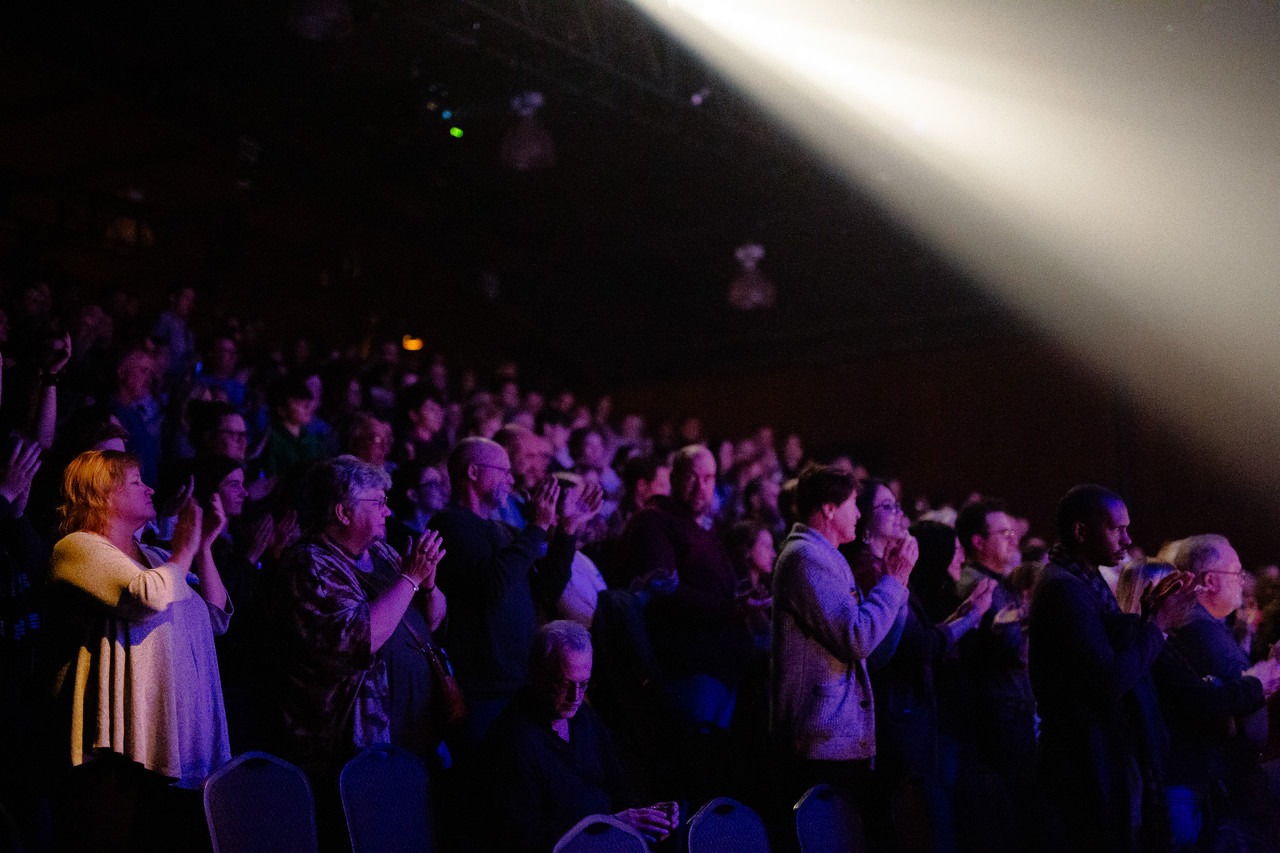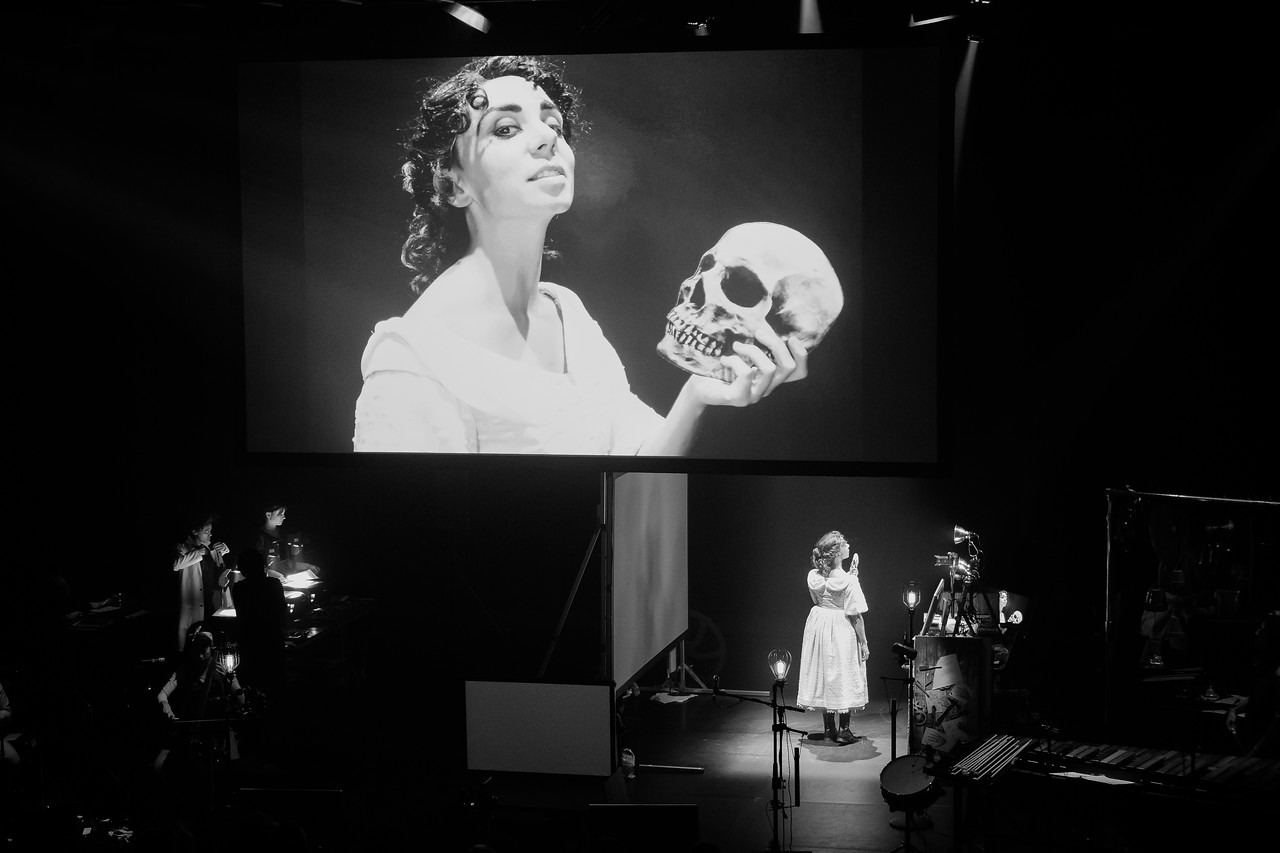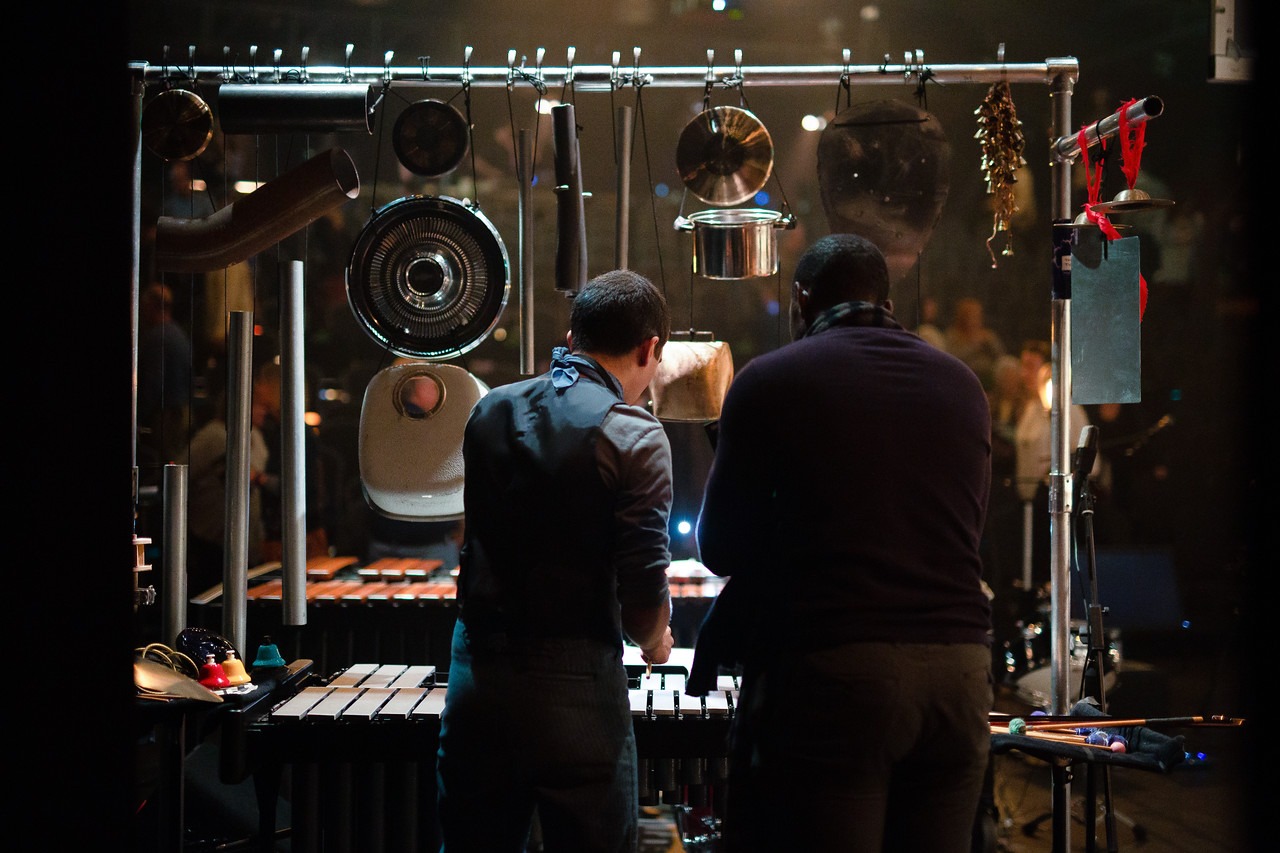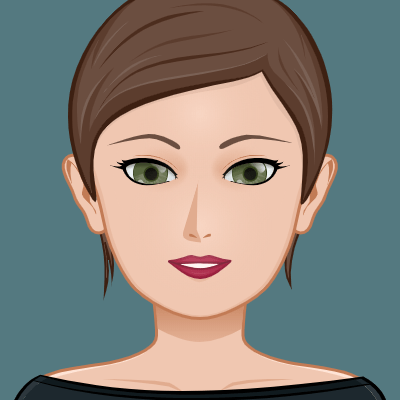Horror in Music City:
An Evening of Superior Cinematic Wonderment: Manual Cinema’s Frankenstein
Upon setting foot in the large black-box theater of OZ Arts Nashville and rounding the corner of a towering construction holding hundreds of stadium style chairs, it was evident I was in for a rare theatrical experience. 25 minutes to show time and the house was already packed, people steadily trickling in with entertained expressions as they were forced to wind through the mass of artsy haircuts, funky glasses, and Nashville chic to find a seat. Artistic Director of OZ Arts Nashville provided the following context for Manual Cinema’s uncharted theatrical territory ahead: “While they may use sophisticated life-feed video techniques, and even robotic percussion instruments, much of their aesthetic is inspired by old technology, including overhead projectors, which they use to create magical effects. Cardboard cut-out shadow puppets cast emotionally-stirring silhouettes, and old-school hand animation techniques evoke phantasmagorical locations, from mountain-tops to spooky gothic mansions.”
“…double shot of imagination, a dash of genius, a sprig of vintage, and a whole lot of finesse.”
Palpable curiosity buzzed through the room as the audience admired the curtain-less stage filled with projectors, screens, cameras, instruments hanging in mid-air, costumes, props, wigs, and a variety of

unrecognizable items. Hanging above the set was an oversized cinema screen, floating just above height level of anyone walking underneath. Actors, puppeteers, and musicians came and went freely from the stage prior to the show, unconcerned about mystery or secrecy, going about their preparations routinely. Once the entertaining task of locating an empty seat for each guest of the sold-out opening night was complete, the lights dimmed and the audience braced itself for the unexpected. What followed was one of the most enchanting, captivating, and exquisitely executed pieces of theatrical art I have ever experienced.
My eyes immediately drawn to the large cinema screen, the film began with silhouette-style paper puppetry representing characters and objects. Special effects with lighting, live instruments, and electronic sounds accented the film at poignant times, creating musical motifs for characters, emotions, and events. A charming and occasionally startling rendition of Mary Shelley’s life unfolded, and I felt myself drawn in by the eerie combination of music, puppetry and magic holding it all together. The scope of sound and music created to attend the film were so impeccably chosen and timed, I hardly remembered there were live musicians at all. The instrumentalists wove together a lush tapestry of effects, timbres, melodies, noise, and rhythmic impulses, creating an affecting ambiance that hooked me, manipulating my emotions moment by moment.

Although I could hardly tear my eyes from the screen, the temptation to witness the remarkable things going on below was strong. After all, Manual Cinema both purposefully and ingeniously creates an environment in which the audience is invited into the production process, encouraged to observe the synthesis, and welcomed into the tangible world of the film’s engineering. On stage, the creators were manipulating paper silhouettes on several projectors, moving seamlessly and unbelievably quickly from one projector to another, casting ominously beautiful scenes onto a large facing screen mirrored by the cinema screen hanging above. Upon looking back to the cinema screen for the full visual experience, to my astonishment one paper cut-out began to move in an incredibly life-like manner. I looked to the puppeteers in an attempt to decipher how they might be creating this effect, only to find a live actress now in front of the shadow screen, having taken the place of the silhouette cut-out. The transition was absolutely imperceptible. The film continued to develop in similarly extraordinary ways as they utilized an extensive array of unique techniques.

After illustrating heart-breaking misfortune in Shelley’s life with the loss of her infant child, the film took a darker path, depicting her visit to Lord Byron and a new-found determination to write a “ghost story.” As the film evolved into a transformative re-telling of Shelley’s Frankenstein, black and white video was introduced and used in uncommon ways throughout the remainder of the film. Puppeteers who previously manipulated paper, props, or their own bodies in front of a shadow screen, were now on camera as entirely different characters. The frequent transitions from projector to shadow screen to camera continued in a seamless fashion, but the audience had now become wholly and blissfully aware of the incredible detail required to make this cinematic wizardry happen. Actors and puppeteers were running in and out of shots, manipulating props, operating cameras, ducking, rolling, crawling, and quick-changing around, under, and through each part of the stage, creating an astonishing illusion.
As the story unveiled Victor Frankenstein’s woefully created creature, 3D puppetry was introduced with HD video in color. The addition of hi-res video at this time was remarkably moving, depicting the creature’s initial perspective of the world and their own horrific body in this unknown place. The heart-wrenching tale of the creature’s struggle to understand the world, love, and loss ensued, shifting between all forms of media as the story progressed. As the somber, wordless narrative drew to a close, Mary Shelley’s character was drawn back into the film, tying the pieces of her life, work, and adversity together into one melancholic, magnificent bow.
Co-Artistic Director and puppeteer Sarah Fornace was remarkable in her stunning portrayal of Shelley’s fragility and strength, and analogously brilliant depiction of Victor Frankenstein’s deranged passion. Puppeteer Leah Casey’s portrait of Percy Shelley was the perfect complement to Fornace’s Mary, not to mention her beautifully etherical vocals in conjunction with the film’s chamber musicians. Kara Davidson’s dark and tender interpretation of The Creature contributed depth and sensitivity, in addition to her light and flighty moments as Elizabeth Frankenstein. Sara Sawicki and Myra Su contributed their personal brilliance as Lord Byron and puppeteer extraordinaire, respectively.
Musicians Peter Ferry (percussion), Lia Kohl (cello, aux percussion, vocals), Rachael Dobosz (flutes, aux

percussion, piano), and Michael Chen (clarinets, aux percussion) brought the film to life with explicitly executed chamber music, contributing to the theatricality of the work both in costume and interaction with the cast. Cellist Lia Kohl shared, “Some of the music is a little bit improvised, so there’s definitely some artistic input of ours. A lot of the cues are visual. I like to compare it to ballet or opera, something that’s a little bit more responsive. It’s definitely chamber music.”
Percussionist Peter Ferry spoke about his contribution to composers Ben Kauffman and Kyle Vegter’s music-writing process: “As a habit, I just accumulate cool sounding junk. That is a sink—it’s everything in the kitchen sink here—some flower pots, which you just find, but they kind of accidentally have different pitches. I’ve got different gongs, [a] cooking pot, pipes that are cut to different lengths to be pitches, other pipes that are found. A piece of a car, it might be a hubcap, used kind of like a metal guiro. We were going for a mad laboratory feeling, both in the sort of sounds that are included, but also in the sculpture that it creates. The composers have just a total ‘game for anything’ sort of approach. They visited my studio, and we went through every single item and recorded everything. As they started to work on the composition, they would take the sound samples of different things and say ‘OK, I really want to use this, I really want to use that.’ As they started to share drafts with me, we would then kind of edit and revise together, simultaneously thinking about how is it going to be laid out. When you’re working with a percussionist, that’s a necessity.”
Manual Cinema’s Frankenstein is a tall glass of nouveau with a double shot of imagination, a dash of genius, a sprig of vintage, and a whole lot of finesse. How refreshing to attend a classic work of literature reinvented with such collective passion, ingenuity, and class. I’ll certainly be looking forward to the next opportunity I have to see this performance collective’s innovative genius.



